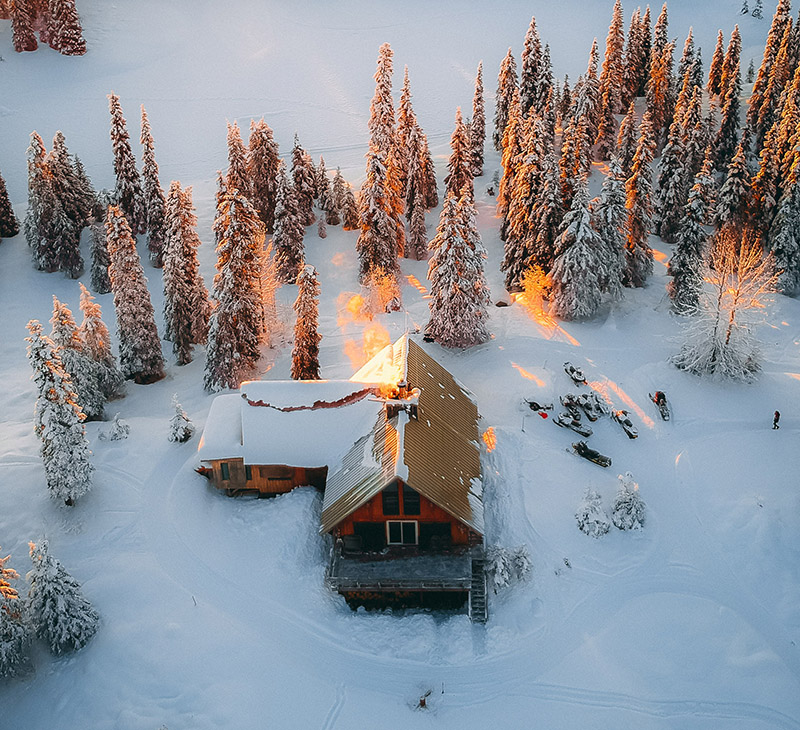The Insect Freeze-Tolerance Mechanism

With harsh winter upon us, people are desperate for a silver lining. If we must suffer through the polar vortex with its absurd amounts of snow and subzero temperatures, perhaps at least it could mean a reduced insect population in the summer? Will this frigid winter kill off more than the average amounts of insect larvae and other bugs that overwinter underground?
How does winter weather affect insects? It depends on several factors.
One factor is where the insect is physically situated in the environment. There are some insects that overwinter as eggs above ground. Praying mantis are one example, as well as bagworms – those huge sacks of worms that you see in tree branches every summer. Insects in this category could be devastated by these record temperatures.
Other insects spend their winters in the ground. White grubs are a good example. Some species of mosquito leave larvae in the dirt, although most in Michigan prefer standing water. Most species of beetle overwinter in the soil, and spider eggs are often left in soil under rocks. How the cold affects these insects depends first and foremost upon whether the insect is freeze-avoidant or freeze-tolerant.
Insects are the most resilient of all creatures when it comes to dealing with cold temperatures, which enables them to survive in environments impossible for most other creatures (such as Antarctica). Insects that are freeze-avoidant can tolerate certain degree of chilling, but they die off when the temperature drops below the freezing points of their body fluids. This means they can be killed by freezing. Example of insects with freeze-avoidance that can be killed by freezing include pine beetles, adelgids, aphids, ticks, and emerald ash borers. Many insects that live or feed on trees are freeze-avoidant.
Remember, freeze-avoidant insects do not die when it gets below freezing, but when the temperature gets below the freezing point for their bodily fluids – i.e., when ice begins to form in their bodies. For most freeze-avoidant insects, this is going to be between 0 and 20 degrees below zero. Some, like the ash borers, can take up to 30 degrees below zero.
Then you have freeze-tolerant insects. Insects with freeze-tolerance are truly a marvel of nature. Freeze-tolerant insects can sustain temperatures at which the majority of their body fluids turn to ice – sometimes as much as 65%. Examples of insects with freeze-tolerance include midges, cockroaches, and wooly caterpillars. It is almost impossible to kill these insects by freezing, and they are not likely to suffer during the winter, even a particularly harsh one. So don’t think you will solve your cockroach problem by turning down the heat!
Keep in mind that, under the soil, insects overwintering will not be subject to the biting wind chills that often drive winter temps down to 20 or 30 below. But if the temperature is low enough and the frost line creeps down deep enough, insects who overwinter in soil with depths less than two feet could be froze if they are only freeze-avoidant and not freeze-tolerant.
One other factor to consider: Insects survive in the winter by burning through stored fat and sugars. Warmer temperatures cause these insects to wake up. Colder temps necessitate burning more energy to stay alive. If freezing temperatures persist into March, some insects may deplete their reserve and not have enough energy to reanimate during the spring thaw.
Soil moisture is another factor that affects insect survival. Insects can dry out and die. Some species are better at preventing water loss than others. On the other hand, many fungal pathogens that kill insects need moisture to thrive, so for some insects maybe dry conditions are better.
You also need to take into consideration other sorts of creatures that prey on insects. Bats, skunks, birds, and other creatures that feed on insects have a large part to play in summer insect populations. If the harsh winter has killed off many of these insect-feeding predators, it will be beneficial to the insect population in the summer. So, the cold is a double-edged sword – while killing off some types of insects, it can also kill predators that eat other insects, allowing things to balance out.
Finally, there is the issue of reproduction. When spring does arrive and insects resume activity, the effect of local weather conditions at the time of reproduction (egg laying and emergence of first instar offspring) will probably overshadow any population changes that took place during the dormant period of winter. This means that what the weather is right now is not so important as what the weather will be once reproduction begins to happen. A deep freeze right now might not have a lot of effect on summer populations. But suppose it starts to thaw next week, insects begin to reproduce, and then we get another sudden cold snap in late March. That could be devastating. So, in conclusion, although there are a variety of ways subzero temperatures effect insect populations, the insect ecosystem is so complex as to make it difficult to predict summer populations. In general, a deeper freeze that lasts longer will mean a general reduction in certain species of insects, but again, much depends on what happens after the initial thaw. Either way, the insects will return. You can count on them!